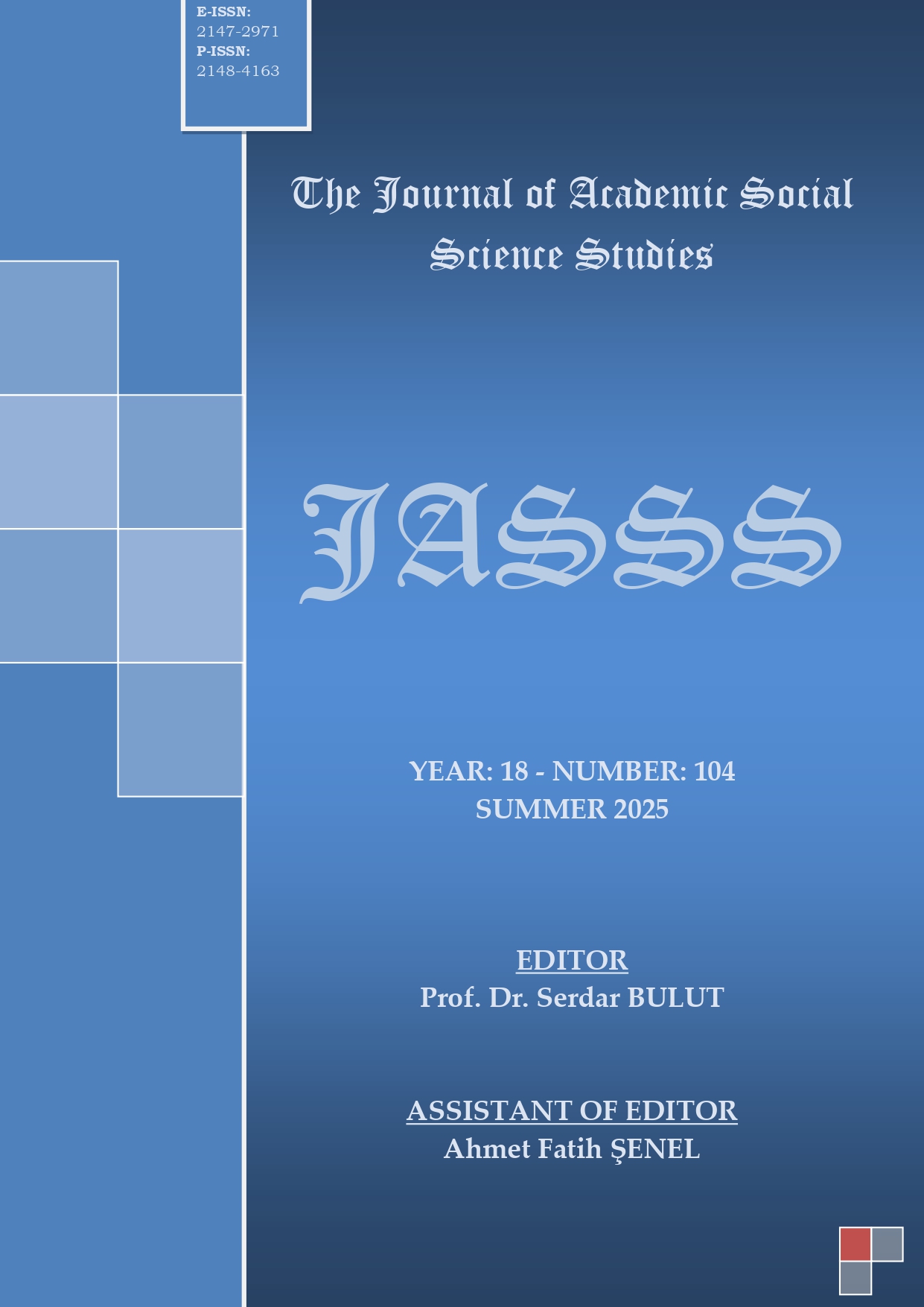BÜYÜK SELÇUKLU DÖNEMİNE AİT BİR GRUP LÜSTER ÇİNİSİNİN YÜZEYİNDE YER ALAN MÜZİK TEMALI TASVİRLERDE KOMPOZİSYON DÜZENİ
Author :
Abstract
Neolitik Çağ’dan günümüze uzanan seramik üretimi, zaman içerisinde sadece günlük ihtiyaçları gideren bir araç olmaktan çıkmış sanatsal amaçla da üretilmiştir. Günümüze kadar gelmiş çeşitli seramik formlar ve kalıntıları, uygarlıkların kültürel, dinsel ve sosyoekonomik yapılarını aydınlatan önemli kaynaklardır. Özellikle dekorlanmış olan seramik formlar insanların yaşayış biçimleri ve bu bağlamda kültürel becerileri hakkında bilgiler vermektedir.
Türklerin yaşadığı coğrafyadaki arkeolojik ve sanat tarihi bulguları arasındaki seramik örnekleri de Türklerin kültür ve sanat tarihi hakkında önemli veriler sunmaktadır.
Büyük Selçuklu Dönemi’ne ait lüster seramikler, Türk seramik sanatı açısından değer arzetmekle birlikte yüzeylerinde yer alan tasvirler bakımından da önemlidir. Bu tasvirler döneminin Türk kültürüne ilişkin önemli bilgiler barındırırken kurgusal özellikleri bakımından da Büyük Selçuklu Dönemi Türk resim sanatı hakkında önemli fikirler vermektedir.
Büyük Selçuklu Dönemi’ne ait lüster seramiklerinin yüzeylerinde yer alan müzik temalı iç ve dış mekan sahneleri, hem Büyük Selçuklu Dönemi’nde müzik kültürünün önemli bir yere sahip olduğunu göstermesi hem de Selçuklu resim sanatının biçimsel özelliklerinin araştırılması bakımından önemlidir.
Bu araştırmada Metropolitan Müzesi’nde yer alan iki adet kase, Pergamon Müzesi, Ackland Müzesi, Cincinati Sanat Müzesi, Kuveyt Ulusal Müzesi The al- Sabah Koleksiyonu’nda yer alan birer adet kase ve Boston İzabel Stewart Gardner Müzesi’nde yer alan bir adet lüster tabağın yüzeylerindeki müzik temalı tasvirlerin (resimlerin) kompozisyon düzenleri incelenmiştir.
Keywords
Abstract
Ceramic production, which dates back to the Neolithic Age, has over time ceased to be a means of meeting daily needs and has also been produced for artistic purposes. Various ceramic forms and remains that have survived to the present day are important sources that illuminate the cultural, religious and socioeconomic structures of civilizations. Especially the decorated ceramic forms provide information about the way people lived and their cultural skills in this context.
Ceramic samples among the archaeological and art historical findings in the geography where the Turks lived also provide important data on the culture and art history of the Turks.
The luster tiles of the Great Seljuk Period are not only valuable in terms of Turkish ceramic art, but are also important in terms of the depictions on their surfaces. While these depictions contain important information about the Turkish culture of the period, they also give important ideas about the Turkish painting art of the Great Seljuk Period in terms of their fictional features.
The music-themed indoor and outdoor scenes on the surfaces of Great Seljuk Period luster ceramics are important both in terms of showing that music culture had an important place in the Great Seljuk Period and in terms of investigating the formal characteristics of Seljuk painting.
In this study, the compositional arrangements of the music-themed depictions (paintings) on the surfaces of two bowls in the Metropolitan Museum, one bowl each in the Pergamon Museum, Ackland Museum, Cincinati Art Museum, Kuwait National Museum The al- Sabah Collection, and one luster plate in the Izabel Stewart Gardner Museum in Boston were analyzed.





